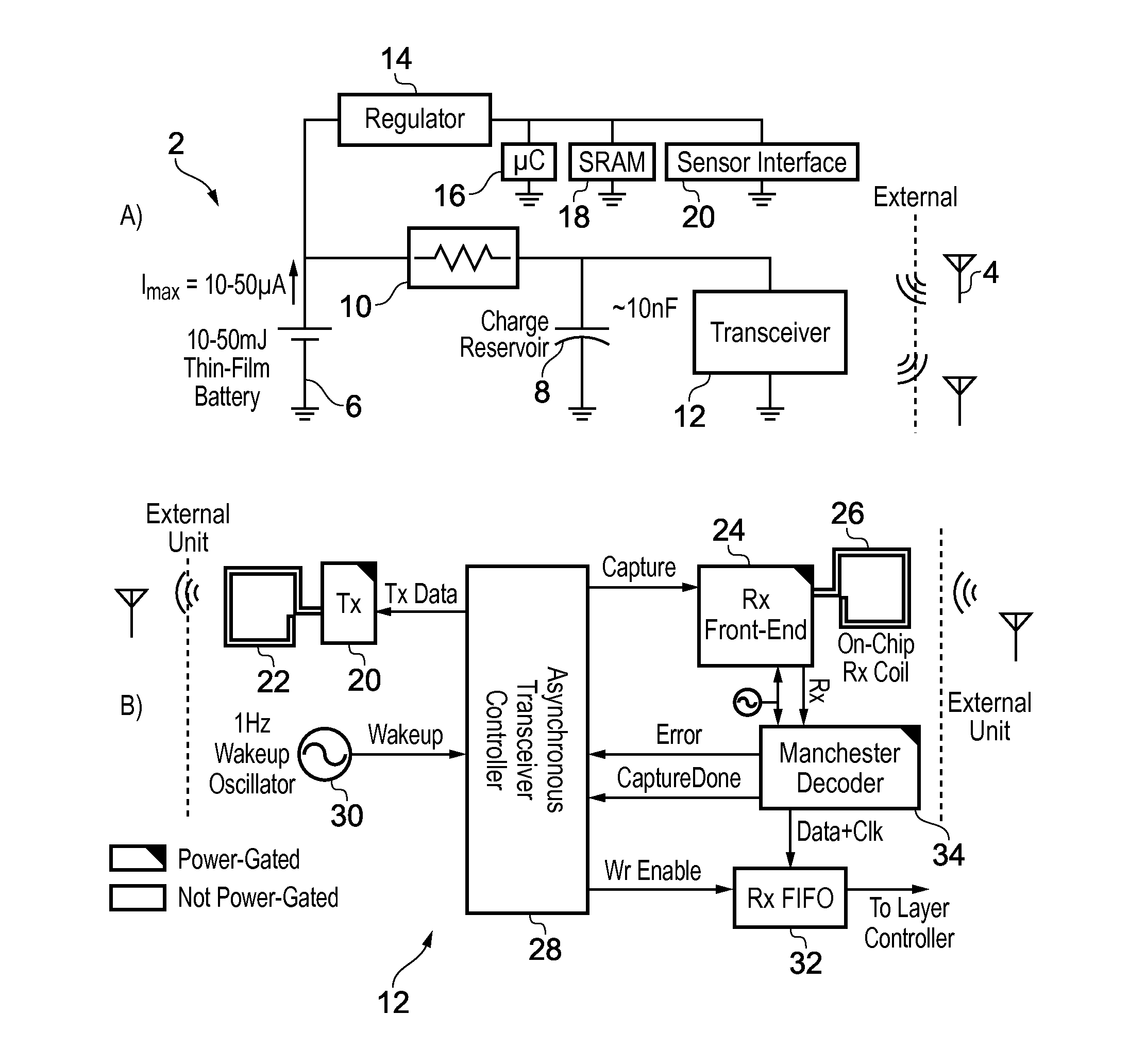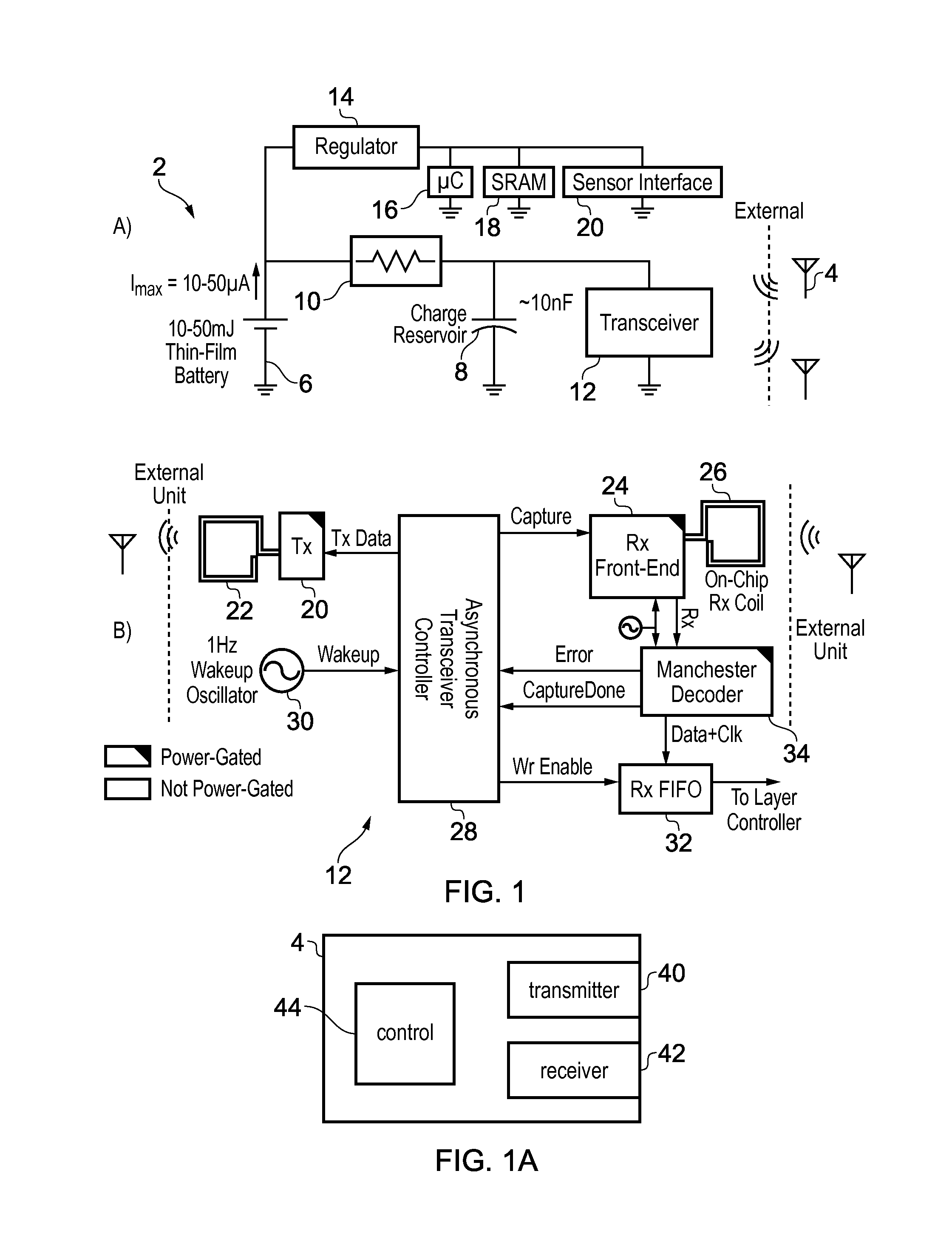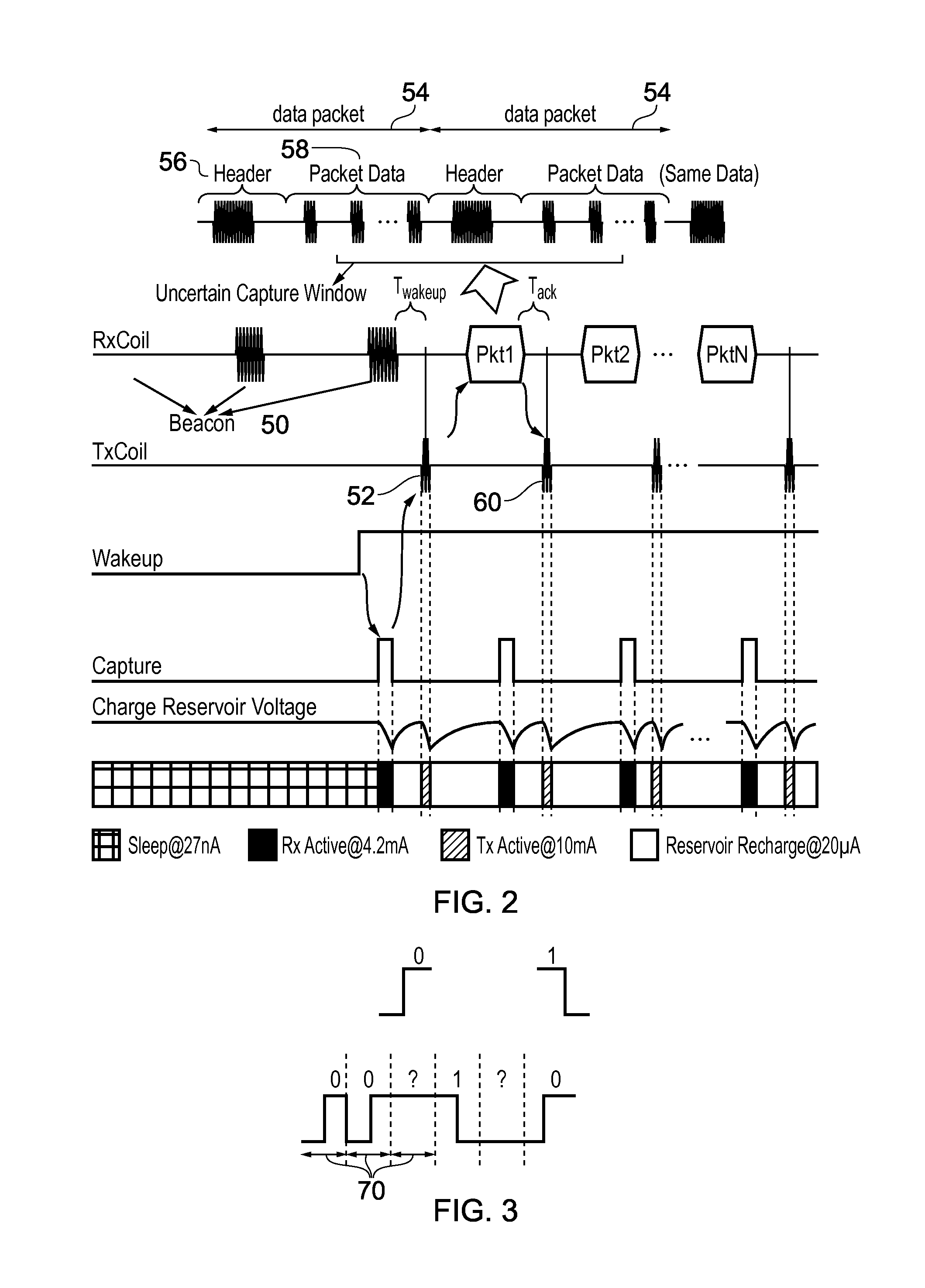Protocol for an electronic device to receive a data packet from an external device
a technology of electronic devices and data packets, applied in the field of electronic devices, can solve the problems of high energy consumption, inability to replace batteries, and high energy consumption, and achieve the effects of less energy consumption, greater current, and energy saving
- Summary
- Abstract
- Description
- Claims
- Application Information
AI Technical Summary
Benefits of technology
Problems solved by technology
Method used
Image
Examples
Embodiment Construction
[0046]Short communication range wireless sensor nodes are in great demand for intracranial, intraocular and cardiac applications, among others. One differentiating feature of such nodes is their highly miniaturized form factors, often in the mm range. As a result, the substantial work in low power RFID is incompatible with this emerging class of devices due to the large antennas of RFID card-type devices. Current near-field solutions require large peak currents not feasible in such systems. Very small (1-10 mm2) thin-film batteries offer a reliable power source for such systems. While their 10-50 mJ capacities are sufficient for the transmission of several Mb between battery recharges (at 1 nJ / bit), their peak output current of 10-50 μA is inconsistent with RF blocks (mA range). Therefore, these blocks may operate using a capacitive charge reservoir (nF range) that is recharged between radio transmissions. However, ms range recharge times reduce bit rate and place tighter requiremen...
PUM
 Login to View More
Login to View More Abstract
Description
Claims
Application Information
 Login to View More
Login to View More - R&D
- Intellectual Property
- Life Sciences
- Materials
- Tech Scout
- Unparalleled Data Quality
- Higher Quality Content
- 60% Fewer Hallucinations
Browse by: Latest US Patents, China's latest patents, Technical Efficacy Thesaurus, Application Domain, Technology Topic, Popular Technical Reports.
© 2025 PatSnap. All rights reserved.Legal|Privacy policy|Modern Slavery Act Transparency Statement|Sitemap|About US| Contact US: help@patsnap.com



